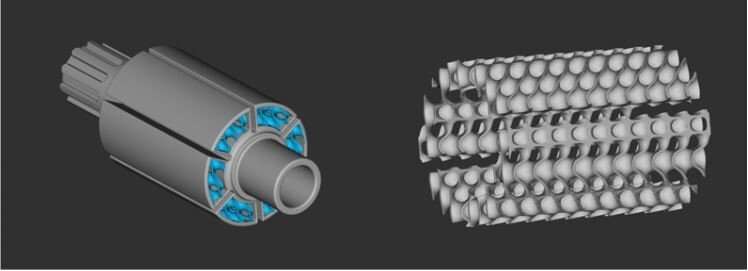By using computer-aided design and additive manufacturing, developers can improve the performance characteristics of geothermal tools, such as this optimized rotor design, and reduce production cost. Credit: ORNL, U.S. Dept. of Energy
Additive manufacturing can make the design and production of specialized tools for geothermal energy cheaper and more efficient, according to a study by Oak Ridge National Laboratory.
Geothermal is a renewable energy resource that requires specialized tools for drilling in harsh subsurface environments. The tools are typically produced in low quantities at high cost using conventional fabrication.
By using 3D-printing techniques, geothermal companies can take advantage of computer-aided technologies to design tools with enhanced performance characteristics. Those custom parts can then be printed using ORNL's high-strength alloys at a lower cost, especially when printing multiple parts in a single build. The lab's techno-economic analysis found ample opportunity to lower the cost of geothermal projects while improving system performance using additive manufacturing.
"The study points to the significant benefits of additive manufacturing and provides a roadmap for future work, including the development of new AM feedstocks based on advanced, high-temperature alloys," said ORNL's Yarom Polsky.
Provided by Oak Ridge National Laboratory
























